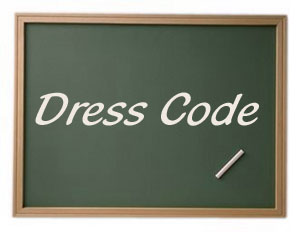For twelve years Woodland students have been following a school dress code – for the most part.
Region 16 has a dress code, however there is no specific dress code for Woodland. Every day, many students walk around school with violations of the Region 16 dress code. For example, open-toed shoes are listed as one of the the violations of the Region 16 dress code, but as you walk the halls of Woodland it is noticeable that many students wear these shoes. This does not meant that the students are violating the dress code, because again, there is no specific high school dress code.
What this means is, Woodland administrators and staff have been reporting and sending students home for rules that have only been in place for the Regional district not specifically the high school itself.
Region 16 superintendent, Tim James, knows a dress code is important for a productive experience at high school.
“Teachers and administrators are primarily concerned with two things, student safety and whether a student’s clothing or grooming is disruptive to instruction,” said James.
Teachers play a huge part in this dress code dilemma, because they are the ones “enforcing it”. To make a call on a student for a dress code violation is part of their job.
The problems lies when teachers themselves do on agree on what is and is not a dress code violation. For example, if a student is wearing a t-shirt one teacher deems inappropriate it is important that they have the support of other teachers to back them up.
It is apparent that without a specific dress code to the high school, teachers may not be on the same page about what should or should not be worn to school. If a dress code were to put in place specifically for the school it may be easier for teachers to be on the same page and give equal enforcement to all students. This is why some teachers and administrators say that students should self-enforce a dress code.
Self-enforcement could be a positive way to enforce dress code, if all of the students and faculty had the same idea about what is appropriate attire. However, appropriateness is relative. What is appropriate for one student may not be appropriate for another student, making a self-enforced dress code optional. Some students believe the hallway is a runway, a place where they can express their individualism and make their mark. Individualism is something students will argue when talking about dress code, but the way you dress is not the only way to express your individuality.
At this time students have no “high-school-only” dress code to follow. Since the students are older it seems that they are more lenient about the Region 16 dress code at the high school level.
As it stands right now, with no dress is seems that it would be difficult for a student to get in trouble because of what they are wearing. In order to be able to break rules they must be implemented in the first place.



















